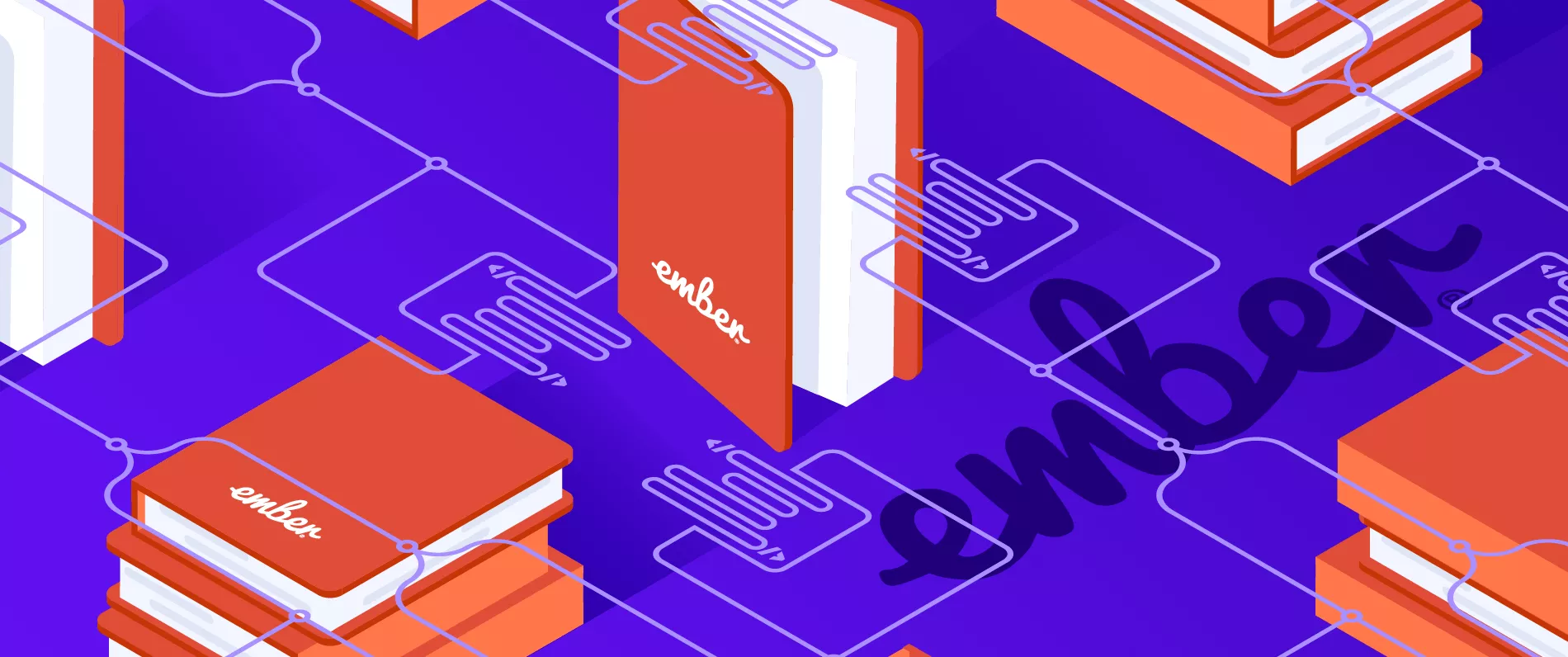Learning Ember: The Easier Way

A couple of months ago, there was a huge shift in my work-life. Or so I thought.
Instead of working in Vue or React, I had to learn Ember for my new frontend position at Productive. I was sure I would have needed quite some time to get used to it. Up until a few months back, I didn’t know what was going on in the Ember ecosystem. Although this didn’t scare me, I felt like it would be a hefty challenge because I wasn’t sure what I was getting myself into.
Turns out, it’s really not that different from the frameworks I already know. All of the usual things you’d expect are there. Things like store management, component slots, dependency injection and much more. And they were a bit easier to use since it all came out of the box!
You don’t have to spend a lot of time deciding between libraries, patterns or technologies because a number of them are already there when you just install Ember. It does have some nuances, pitfalls and you still have to choose between some libraries (UI libraries, I’m looking at you), but I haven’t worked with a framework where you didn’t have to worry about anything. After I took all this in, the hefty challenge didn’t seem so bad anymore. Now, this was just a matter of getting used to the framework.
As I’ve started to learn about Ember on a deeper level, a lot of the concepts were familiar to me. Some were described exactly as you’d expected them, some were named differently and some used a different terminology.
But since Ember has such a long history (for a Javascript framework, at least), there are some terms I wasn’t aware of. That’s why I started to write down anything that I wanted to learn more about. This included libraries, phrases, patterns and technologies. I was sure this would help me in the long run, so I’m sharing it with anyone who’s just starting out with Ember.
This is especially helpful if the codebase you’re working on has a couple of years under its belt. It pays off knowing how and why things were done so you don’t accidentally break a functionality when refactoring.
I’ve talked long enough, so here’s the list!
Embroider
A modern, full-featured build system
Some build features it is supposed to provide:
Reduced build and reload times
Tree shaking for Ember related modules, components, etc.
Support for arbitrary code splitting
You can opt-in to use it, but will be used in the future
Learn more about it:
Glimmer
DOM rendering engine
Architected like a virtual machine (uses Glimmer VM)
Can coexist with classic components
Builds a “live” DOM from Handlebars templates and cheaply updates after data changes
Learn more about it:
Classic Components
Older-style components that do not use native classes
Glimmer components are preferred nowadays
Learn more about it:
Handlebars
A templating language not specific to Ember
Used in Ember to define component templates
A superset of Mustache templates
Adds some functionalities to make writing templates easier
Learn more about it:
Mustache
Can be used to template anything, not just HTML
Called logic-less because it has no if statements, else clauses or for loops
Learn more about it:
Broccoli
An asset pipeline
Used for converting ES6 to ES5, SCSS to CSS, etc.
Supports constant-time rebuilds
Came as a replacement for Grunt
Learn more about it:
“Data down, actions up”
Represents a unidirectional flow of data
Passing data to a child component or subroute
The child component receives the actions that modify the given data
Helps with the separation of concerns
Avoids complex data loops
Not specifically related to Ember, but mentioned in the docs a lot
Learn more about it:
Ember Helpers
Javascript functions that can be called from the template
Ember offers some helpers out of the box, like:
Learn more about it:
Ember Engines
A specific type of Ember addon
Allows multiple logical applications to be composed into a single application from the user’s perspective
Requires a host application since they don’t boot themselves
Helpful when trying to separate the different areas of a single application
Can be used in the host repository or in a entirely different repository
Learn more about it:
Ember Test Helpers
DOM and other testing helpers that are not automatically included when Ember is installed
Learn more about it:
Ember Fastboot
Ember SSR
Does not require codebase changes for it to work
Learn more about it:
Ember Modifiers
A way to interact with the DOM in Ember (instead of manual interaction)
Some modifiers come out of the box, but you can also write custom ones
Learn more about it:
Autotracking
Ember’s reactivity model
Decides what to render and when
Learn more about it:
Qunit
A testing framework
It was used in jQuery, but was extracted as a separate project
Not specific to Ember, but is used in Ember by default
Learn more about it:
Ember CLI
The official way to create, build, test and serve Ember projects
Other frameworks have their own versions, as well
Learn more about it:
Octane
The current edition of Ember released in December 2019
Introduced a lot of new concepts and newer ways of developing
Glimmer components
Modifiers
…
Learn more about it:
Polaris
Ember’s next edition
Will introduce more new concepts and functionalities
Learn more about it:
I’m sure some things might be missing, but this is what was the most puzzling to me. Hopefully, you’ll find some use of all these terms!
Also, I feel like it would be kind of rude not to mention the resources I used while learning Ember: (yay, more lists)!


